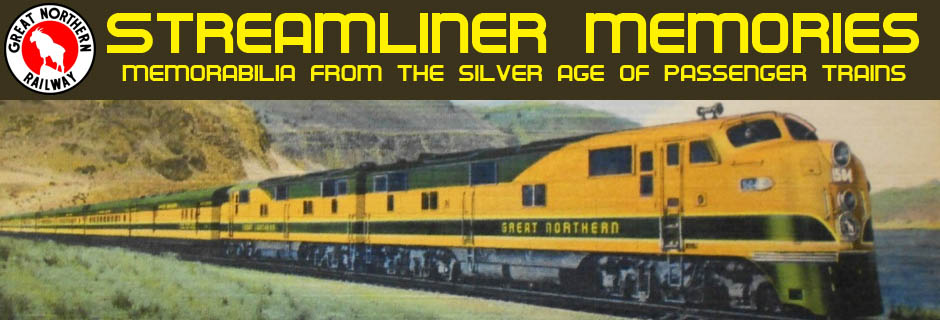Leslie Ragan’s painting of the dome-laden Empire Builder wraps 1-1/4 inches around the back cover of the 1955 report. Incongruously, the rest of the back cover shows an iron ore strip mine in the Minnesota hills, no doubt on Great Northern Iron Ore Properties trust lands.
 Click image to download a 17.7-MB PDF of this 28-page report.
Click image to download a 17.7-MB PDF of this 28-page report.
The Great Northern Iron Ore trust was created by James J. Hill who, on the advice of Louis Hill, had invested about $5 million in mineral lands in Minnesota. It turned out the lands were worth about $500 million. Hill felt uncomfortable profiteering from his railroad’s inside access to local resources and he would have simply sold the land to the railroad at his cost. But the Interstate Commerce Commission forbade railroads from owning their customers, so he created the trust and gave shares in it to GN stockholders. Since he was a major stockholder, he still made lots of money, but so did everyone else who owned stock in the railroad.
Apparently, Minnesota trust law did not allow trusts to be perpetual, so Hill decided the trust should liquidate 20 years after the death of all of the original trustees. He then named some of his young grandchildren as trustees. The last one died in 1995, so the trust dissolved in 2015. By that time, the iron ores were pretty close to being exhausted, but the trust had earned more than $500 million for its share owners.
 Click image to download a 1.4-MB PDF of this cover spread.
Click image to download a 1.4-MB PDF of this cover spread.
The centerfold presents the dome cars, of course, with three photos of the full-length dome on the left side and three photos of a dome coach on the right. The report notes that, thanks to the dome cars, the Great Northern actually experienced an increase in civilian passenger traffic, though there was a decline in military traffic.
